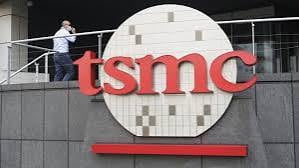TSMC’s China Shipments Blocked as US–China Rivalry Escalates
Washington has stripped TSMC of its “validated end user” status for China-bound supplies from the US, a change that takes effect on 31 December and turns routine shipments into case-by-case export-licence applications.
The move aligns TSMC with Samsung and SK Hynix, which lost similar privileges last week, and adds fresh friction to a supply chain already navigating tariff swings and regulatory resets. The immediate pressure point is Nanjing, where TSMC produces older-generation chips.
Every delayed tool, part or software update now risks elongating cycle times and raising working-capital needs, even as the company’s most advanced production remains anchored in Taiwan and the US.
Policy signaling is unambiguous. After sweeping semiconductor curbs in 2022, Washington is reiterating that licences will not be used to expand capacity or upgrade technology at China fabs. That stance sits uneasily beside the 12 August tariff thaw, which lowered duties for 90 days to cool trade tensions, underscoring how a tactical ceasefire can coexist with strategic decoupling.
What Does This Mean for Me?
With the licence clock ticking toward year-end, uncertainty over processing times becomes a cost in and of itself: longer lead times, potential rerouting through non-US suppliers, and tighter buffers in procurement plans.
Beijing’s critics-turned-pragmatists argue the restrictions may accelerate import substitution as Chinese firms race to localise equipment and materials. For global chipmakers, the room for error is narrow. Any slip in approvals, even by weeks, can ripple through quarterly output schedules and capex pacing, forcing managers to balance compliance risk against delivery commitments.

More News
.webp)
Japan’s Rate Shift Is Rippling Through Global Bond Markets

China’s Growth Engine Stalls as Consumers and Investors Pull Back

Egypt’s Recovery Gains Traction as Household Pressure Lingers

OECD Warns AI and Tariffs Will Test the Global Economy

Zero Tariffs, Higher Drug Bills as US and UK Reset Pharma Trade

Catastrophe Bonds Go Global as Climate Risk Meets Yield Hunting
.webp)
Canada Shields Steel and Lumber Industries From Tariffs
